For centuries, the influence of Chinese food has made its way around the globe. The country’s cuisine is incredibly popular everywhere you go, and lovers of Chinese food are well being catered for with different options ranging from Chinese street food to boutique Chinese restaurants.
Experience Chinese food in China
Still, the best way to experience authentic Chinese cuisine is by going to China. You would be surprised by how many remarkable dishes and exotic ingredients you will come across.
Want to travel China seeking out the spiciest soups, best bamboo-pounded noodles, and crispiest duck? Here’s how you can eat like a local in China.
What the Chinese locals eat
A well-known Chinese joke is that the Chinese eat everything with four legs, except tables, anything that flies, except for an airplane, and anything that swims, except for a submarine. Though exaggerated, it vividly demonstrates the variety of ingredients found in Chinese cuisine.
When in China, take a good look at your plate. You’ll see that Chinese dishes are perfectly prepared, with vivid colors, rich flavors, and exquisite tastes. Chefs carefully cut and carve the different ingredients to make your plate look like a piece of art.
Another look at your plate, and you’ll most likely find either rice or noodles as part of your dish. These staple foods are probably the most famous and frequently used ingredients in the Chinese kitchen.
Chinese people eat rice or noodles almost every day, but if you think that makes Chinese food is boring, think again! China’s different regions all have their very own distinct regional cuisine. Let’s take a look.
The culinary traditions of Chinese cuisine
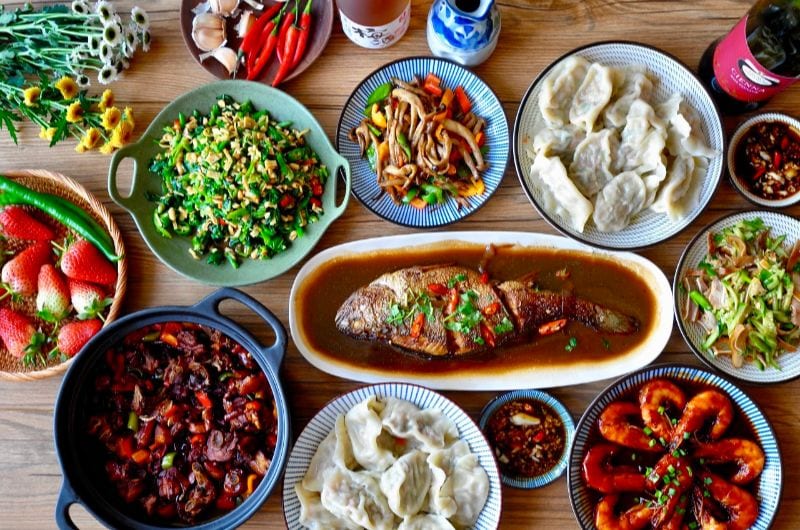
China is an ancient civilization with a long history of over 5000 years. Throughout the centuries, China has established an authentic food culture, with its very own unique dining etiquette. One that foreign visitors may consider quite different from what they’re used to.
Chinese food has five key flavors that must be balanced according to traditional Chinese medicine, namely sweet, sour, salty, bitter, and spicy. Flavors vary by region, all influenced by the geographical location, available resources, cultural customs, and cooking techniques.
Chinese food can be divided into the following eight distinguished regional cuisines.
Simple Shandong cuisine
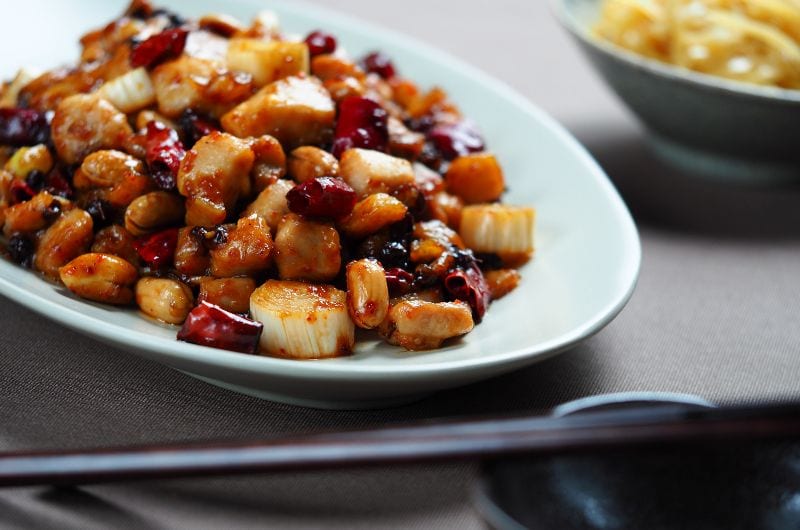
Simplicity is key in Shandong cuisine (or Lu cuisine), one of the most prevalent cuisines in China, and popular in northeast China, Beijing, and Tianjin. Shandong cuisine specializes in simple dishes, highlighting the original flavors of the ingredients. Making soups and soup dishes is this region’s forte.
Spicy Sichuan cuisine
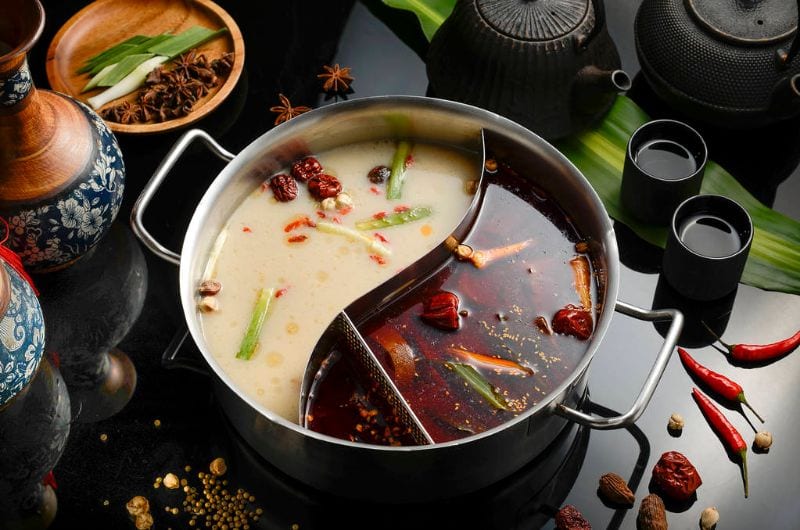
Universally famous for being spicy-hot, the Sichuan cuisine (or Chuan cuisine) uses chilis, peppers, and over 40 different cooking techniques to spice things up in the kitchen. Classical Sichuan dishes include Mapo Tofu, Kung Pao Chicken, and boiled pork slices.
Exquisite Cantonese cuisine
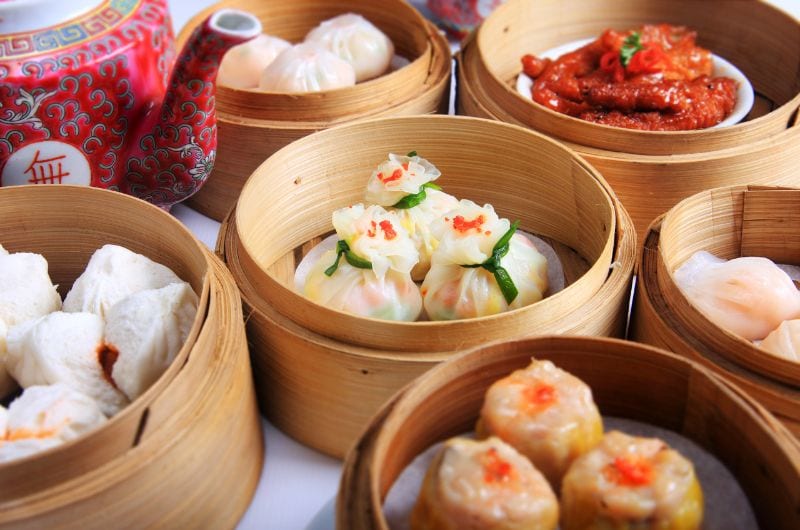
Originating from China’s Guangdong Province, Cantonese cuisine (or Yue cuisine) is almost considered a work of art. Think dishes with fresh and tender taste, full of exotic and innovative ingredients, prepared by excellent chefs.
Mountain-style Fujian cuisine
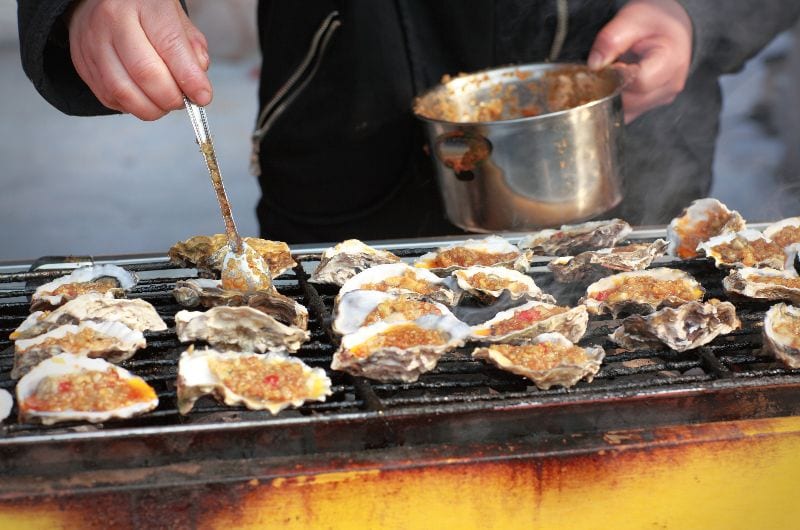
Fujian chefs are renowned for their masterly cutting skills, endeavoring to highlight the original flavors of the used ingredients. Fujian dishes are light and fresh and vary from mouthwatering mountain delicacies to steamy seafood. Fujian cuisine (or Min cuisine) also offers a dazzling variety of soup dishes.
Fresh Jiangsu cuisine
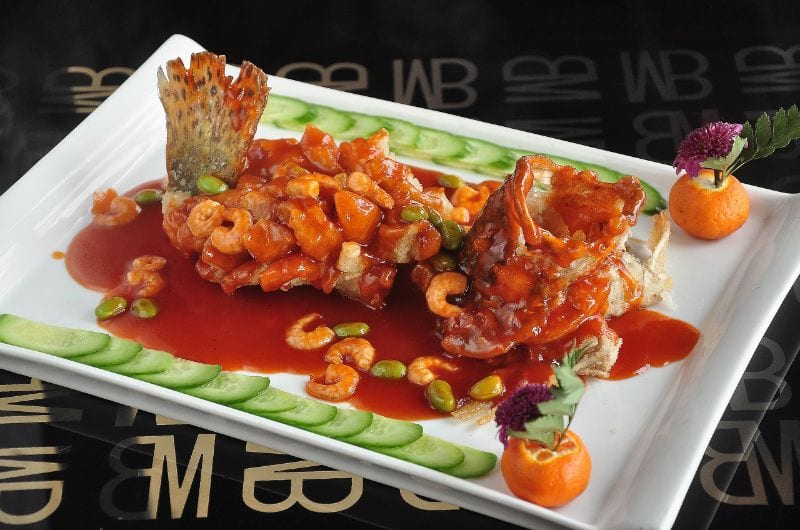
Dishes from the Su cuisine, short for Jiangsu cuisine, are fresh, with a moderately sweet taste. The Jiangsu cooking style is distinguished by crafty cutting and carving techniques, and an elegant appearance. Our personal favorites are Jinling Salted Duck, Liangxi Crisp Eel, and Braised Mandarin Fish in Shape of Squirrel.
Rich Zhejiang cuisine
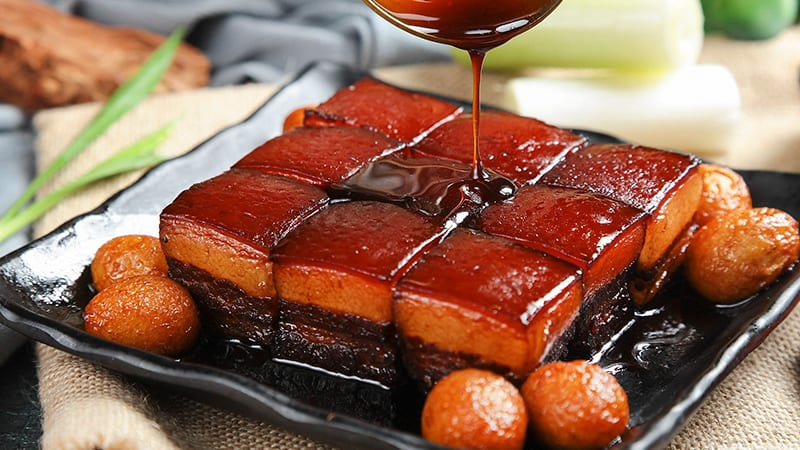
Zhejiang Province, along the eastern coastline of China, is known as the land of the plenty thanks to its countless fish farms, myriad mountain delicacies, and abundant freshwater foods. Zhejiang cuisine (or Zhe cuisine) is known for its alluring aesthetics, tender taste, and rich cultural connotation.
Hot Hunan cuisine
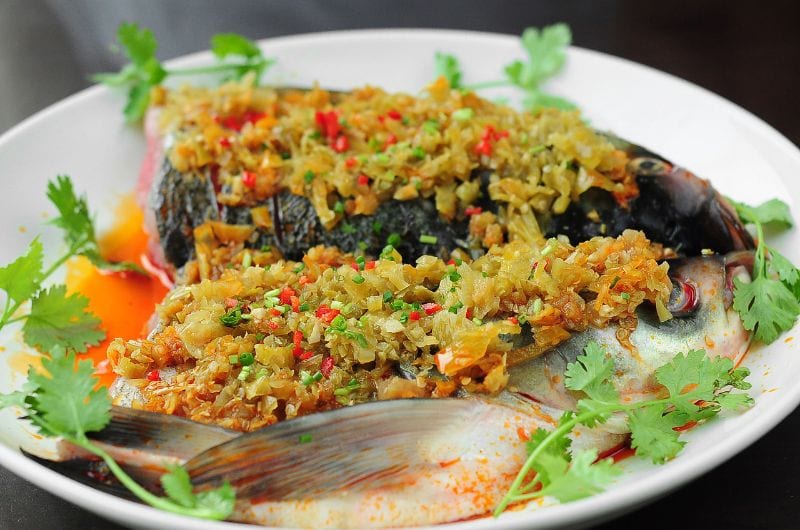
Hot, hotter, hottest! Hunan people love their chilis, thus it’s no surprise that half of a Hunan dish consists of chili. However, it’s not just the spicy taste that makes Hunan cuisine (or Xiang cuisine) so distinctive. Its rich colors and thick oils will make your mouth water just as much.
Original Anhui cuisine
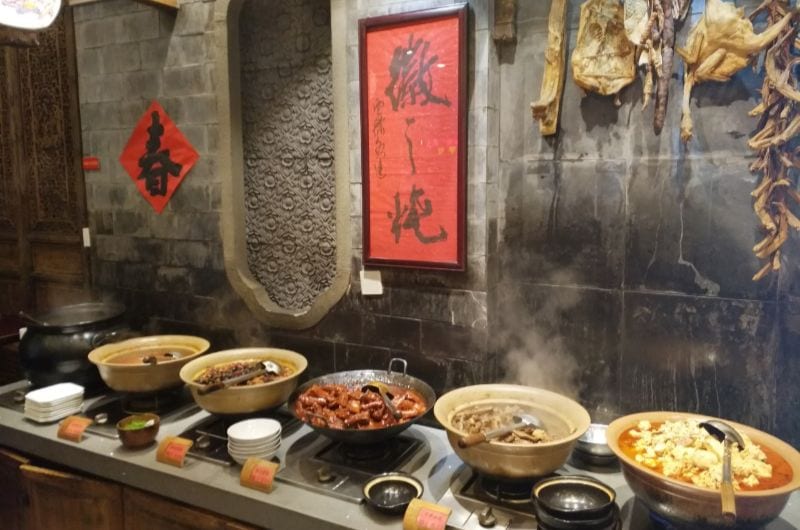
Anhui people value the freshness and original flavor of their ingredients. Anhui cuisine (or Hui cuisine) cooking style emphasizes the use of heat, favoring techniques such as stewing, steaming, and braising. The strictly controlled cooking process is what sets the Anhui cuisine apart from other regional cuisines in China.
Other regional Chinese cuisines
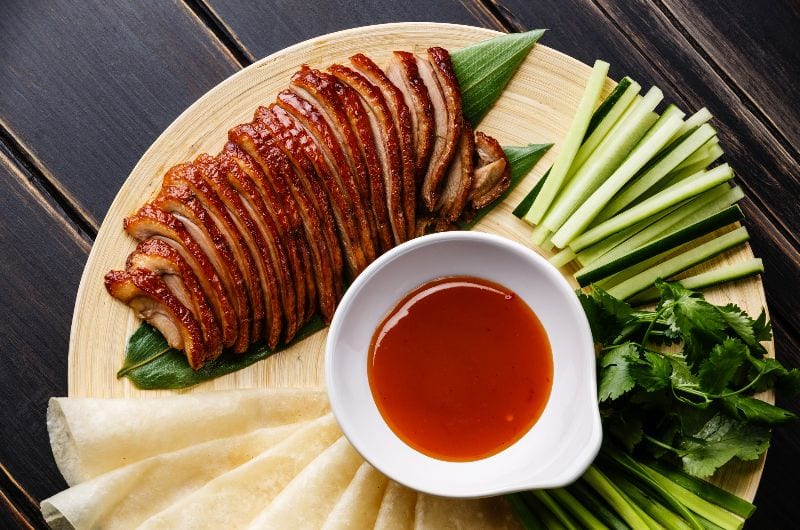
Besides the eight culinary traditions of Chinese cuisine, there are many other famous local cuisines to be found throughout the country. Looking for examples of Chinese food, here’s a short list:
- Beijing cuisine
- Shaanxi cuisine
- Taiwan cuisine
- Northern Minority cuisine
- Southern Minority cuisine
Chinese food traditions
Chinese cuisine is deeply rooted in Chinese tradition and religion. China is a multi-religious country, and each religion comes with its own culinary customs.
With Buddhists making up the largest religious communities in China, and main ingredients of Chinese cuisine being noodles or rice, tofu, and fresh vegetables, it’s not that hard to be a vegetarian in China. Vegetarian food is widely available in Chinese restaurants however you should be very clear and specific about what you don’t eat.
Given the large Muslim population in China, halal food is also fairly easy to find. Chinese halal foods is an infusion of original Middle Eastern and traditional Chinese flavors, characterized by the use of wheat products, sweet flavors, and chicken, beef and lamb.
All these different religions in China have their own different festivals and special occasions, and preparing and eating food is an important part of a celebration.
Eating dumplings, for instance, is an important part of the Chinese Spring Festival. An ancient Chinese tale even tells us, the more dumplings you eat on Spring Festival Eve, the more money you will make in the New Year!
And did you know eating noodles is a birthday must in China? Long noodles are a symbol of longevity. The longer the noodles are, the more promising.
Need to balance your qi after all those celebrations? Try some chicken and ginger soup, a Chinese medicinal dish. Healing herbs or animal parts have been added to the Chinese diet to heal disease since ancient times. It is said that each food item’s temperature and flavor influences the body in its own way, and taking too much of one type of food can cause an imbalance.
Dining etiquette in China
Chinese people pay great attention to etiquette and customs, so before you visit a Chinese family or restaurant it’s good to learn a thing or two about Chinese dining etiquette. Pay attention to what your host is doing and show good table manners.
Tour the Real China with ChinaTours.com
Excited to taste authentic Chinese food? Our wide variety of China tours combines the most fascinating destinations with exquisite Chinese cuisine in carefully selected restaurants.
ChinaTours.com also offers you the possibility to have a genuine family dinner with a local Chinese family. Talk to our China tour experts or book your China experience online.
A small group, private or custom tour is the ideal way to experience China when you travel with the friendliest China tour company. Arranging specialized inbound China tours for over ten years, we understand the importance of providing comfort, safety, and a real experience of China. What makes ChinaTours.com different? Our small group focus. We can even arrange private tours for any of twenty unique China destinations, such as Beijing tours, the Yangtze Tours, and Taiwan tours.

